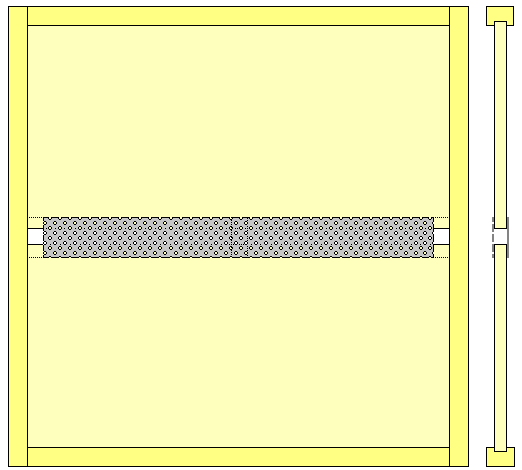This is a fairly conventional Canadian type escape, but it only has one exit path.

The panels are made of 8 mm waterproof plywood (Bob had bought a large batch of 9 mm ply that was of substandard thickness and was thus less expensive to purchase).
The gap between the panels was 24 mm and the entrance and exit holes were 24 mm square.
The 'top' of the slot was covered with a strip of 18 SWG aluminium with the 'underside' covering being 8 mesh. The words 'top' and 'underside' are used here, but Bob claimed that it worked just as well either way up.
I bought a few from him and sold them in my shop, but I never did get around to testing this item.

Since drawing the version above left (which was sold during the 1980's and 1990's) I have encountered a very early version. The main differences are the use of 12 mm plywood for the panels. The channel between the panels is 16 mm wide and a perforated sheet is used instead of 8 mesh. the solid aluminium slot cover has it's 16 mm square 'entrance' (or 'exit') in the centre and there are two 16 mm square 'entrances' (or 'exits') on the side with the perforated slot cover.
The particular example that I encountered had a small piece of aluminium fixed across the central 'hole', using two drawing pins, effectively blocking the system and rendering the item a plain cover board (which was the particular method of use at the time I found it).
All the holes in the perforated metal had been filled with propolis.
The drawings above are for the National hive and are scaled at 1 pixel = 1 mm.